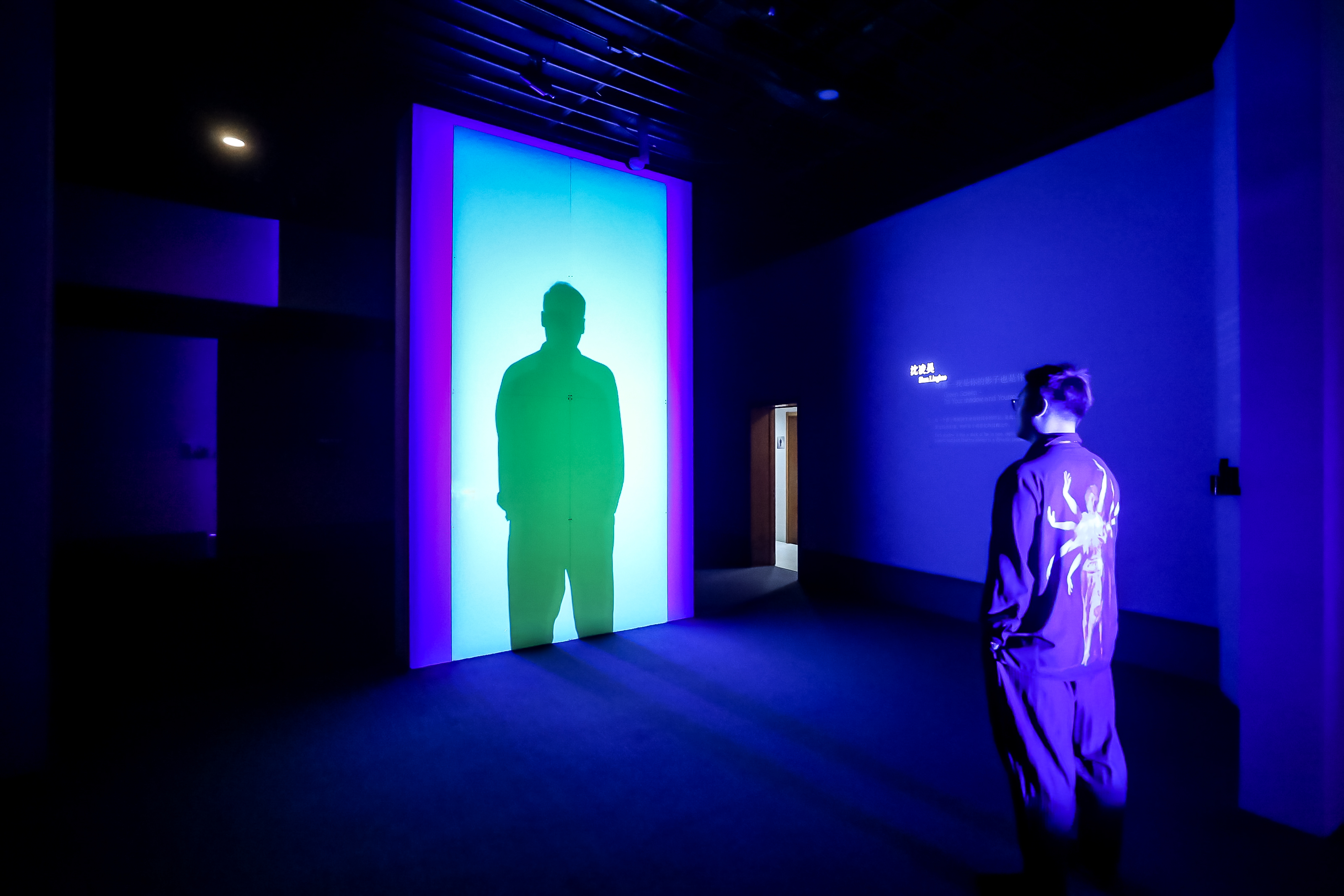《昙花,只为夜晚盛开》是沈凌昊为滇池风土艺术季在地创作的场域特定艺术项目,通过摄影、光学材料、植物与空间的艺术实践,延续了他对生命、时间和存在的探索。艺术家以“昙花”为主题,意图呈现这一生命短促而绚烂的周期,同时探讨人类主体性的自我观照。
灵感源自村上春树的小说《世界尽头与冷酷仙境》,小说通过主人公被剥离影子的情节探讨人类存在的短暂性、脆弱性以及个体与环境的微妙联系。光学摄影作品《昙花,只为夜晚盛开》在昼夜交替中呈现出不同形态,记录了艺术家在海岸线上感知、引导光向大海的行为,并在夜幕中通过特殊工艺制作的昙花影像散发出白色光晕,呈现出昙花盛开的“时间性”光学图像,引发观者对生命瞬间与恒常的深刻思考。
在空间的构建上,艺术家通过风铃装置作品《解铃之人》与嵌入场域的光敏媒介摄影,还原了海晏村肖家民居建筑的质感与氛围。装置作品《影子广场》则再现了小说中失去影子之人与失去人之影子相见的场景,昙花苗圃与观众的动作被记录在光幕上,与夜晚的光影共舞。
艺术家以独特的艺术语言将破败的民居后院转变为“光的花园”,创造了一个开放性的艺术场域。通过捕捉昙花在夜幕中盛开的瞬间,定格个体在时间的边缘,邀请观众在白昼与黑夜间感受作品与空间、自然的融合,领悟超越日常的生命体验。
“It blooms nocturnally, and wilts before dawn" is a site-specific art project created by Shen Linghao for the Dianchi Lake Cultural Art Season. Through the artistic practices involving photography, optical materials, plants, and space, he continues his exploration of life, time, and existence. The artist takes the local epiphyllum in Kunming as the theme, intending to present the short and splendid life cycle of this flower while exploring the self-reflection of human subjectivity.
Inspired by Haruki Murakami's novel Hard-Boiled Wonderland and the End of the World, which explores the transience, fragility of human existence, and the subtle connections between individuals and their environment through the protagonist being deprived of his shadow. The optical photography work "It blooms nocturnally, and wilts before dawn" presents different forms during day and night, documenting the artist's perception and guiding light towards the sea along the coastline. In the night, the specially crafted image of the peony emits a white halo, presenting an "ephemeral" optical image of the blooming peony, prompting viewers to contemplate the profound moments and constants of life.
In the construction of space, the artist uses the wind chime installation "The Bell Ringer" and light-sensitive medium photography embedded in the site to restore the texture and atmosphere of the Xiaojia residence in Haiyan Village. The installation "Shadow Square" reproduces the scene from the novel where the person who lost their shadow encounters the shadowless person. The actions of the peony nursery and the audience are recorded on the light screen, dancing with the light and shadows of the night.
With a unique artistic language, the artist transforms the dilapidated courtyard of a rural residence into a "garden of light," creating an open artistic space. By capturing the moment when the peony blooms in the night, freezing individuals on the edge of time, the artist invites the audience to feel the integration of the artwork, space, and nature between day and night, comprehending life experiences beyond the ordinary.

沈凌昊
1988年出生于中国上海,本科毕业于复旦大学上海视觉艺术学院绘画系,研究生毕业于旧金山艺术学院实验艺术系,现生活与工作于上海。
沈凌昊的创作媒介涵盖摄影、影像、装置、写作等。在他的创作谱系中,⼀极源起摄影,如同⾯向真实世界的感知器,⼀极触动⾁⾝,营造⾝⼼灵的交感共振。他关注的历史、真相、时间、现实都收纳于极具个⼈⻛格的艺术现场之中,对于个体⽣命的尊重与当下现实的危殆共同构筑起对于“主体性”的关照。
多年来,沈凌昊的艺术实践始终致⼒于光与空间的在地性、实验性探索,其代表性的光学场域互动装置通过新材料与技术的运⽤,探讨技术在艺术中的可能性与感知外延,并作为⼀种观念的语法。他运⽤感光材料的“留光性”呈现时间的回溯及忆的易逝性,通过影像对个体经验形成的作⽤赋予特定空间以强度,达成与每位临场观众的当下连接,重构时间与记忆之间的关系,并唤起⼈之脆弱易感、存在与联觉。
Shen Linghao was born in 1988 in Shanghai, China. He graduated from the Painting Department of the Shanghai Academy of Visual Arts at Fudan University and completed his postgraduate studies in Experimental Arts at the San Francisco Art Institute. Currently, he lives and works in Shanghai.
Shen Linghao's artistic mediums include photography, video, installations, and writing. His creative journey originated from photography, serving as a perceptual tool towards the real world, and evolved into a visceral experience, cultivating a resonance of body and soul. His works delve into history, truth, time, and reality, encapsulating these themes within highly individualized artistic scenes. The respect for individual life and the precariousness of contemporary reality jointly contribute to the focus on "subjectivity."
Over the years, Shen Linghao's artistic practice has been dedicated to the localized and experimental exploration of light and space. His representative interactive optical installations, utilizing new materials and technologies, investigate the possibilities and perceptual extensions of technology in art, serving as a syntax of conceptual ideas. Through the "retentiveness" of photosensitive materials, he presents a retrospective of time and the ephemeral nature of memory, imparting specific spaces with intensity through the impact of images on individual experiences. This connection with each present audience reconstructs the relationship between time and memory, invoking human vulnerability, existence, and synesthesia.